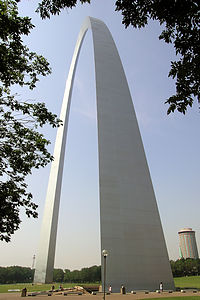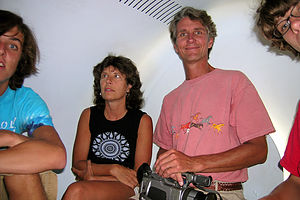- Home
- About
- Map
- Trips
- Bringing Boat West
- Migration West
- Solo Motorcycle Ride
- Final Family XC Trip
- Colorado Rockies
- Graduates' XC Trip
- Yosemite & Nevada
- Colorado & Utah
- Best of Utah
- Southern Loop
- Pacific Northwest
- Northern Loop
- Los Angeles to NYC
- East Coast Trips
- Martha's Vineyard
- 1 Week in Quebec
- Southeast Coast
- NH Backpacking
- Martha's Vineyard
- Canadian Maritimes
- Ocracoke Island
- Edisto Island
- First Landing '02
- Hunting Island '02
- Stowe in Winter
- Hunting Island '01
- Lake Placid
- Chesapeake
- Provincetown
- Hunting Island '00
- Acadia in Winter
- Boston Suburbs
- Niagara Falls
- First Landing '99
- Cape Hatteras
- West Coast Trips
- Burning Man
- Utah Off-Roading
- Maui
- Mojave 4WD Course
- Colorado River Rafting
- Bishop & Death Valley
- Kauai
- Yosemite Fall
- Utah Off-Road
- Lost Coast
- Yosemite Valley
- Arizona and New Mexico
- Pescadero & Capitola
- Bishop & Death Valley
- San Diego, Anza Borrego, Joshua Tree
- Carmel
- Death Valley in Fall
- Yosemite in the Fall
- Pacific Northwest
- Utah Off-Roading
- Southern CA Deserts
- Yosemite & Covid
- Lake Powell Covid
- Eastern Sierra & Covid
- Bishop & Death Valley
- Central & SE Oregon
- Mojave Road
- Eastern Sierra
- Trinity Alps
- Tuolumne Meadows
- Lake Powell Boating
- Eastern Sierra
- Yosemite Winter
- Hawaii
- 4WD Eastern Sierra
- 4WD Death Valley +
- Southern CA Deserts
- Christmas in Tahoe
- Yosemite & Pinnacles
- Totality
- Yosemite & Sierra
- Yosemite Christmas
- Yosemite, San Diego
- Yosemite & North CA
- Seattle to Sierra
- Southwest Deserts
- Yosemite & Sierra
- Pacific Northwest
- Yosemite & South CA
- Pacific Northwest
- Northern California
- Southern Alaska
- Vancouver Island
- International Trips
- Index
- Tips
- Books
- Photos/Videos
- Search
- Contact
Gateway Arch / St. Louis, MO
Monday, August 1, 2005 - 7:00am by Lolo
82 miles and 1.5 hours from our last stop
Travelogue
The Gateway Arch was a long overdue stop for us. It was the monumental symbol of westward journeys, yet in our own numerous journeys west, we had yet to visit it. I felt inadequate in my role as a traveler. This year's eastward route took us on I70 right through St. Louis, so we decided to finally see it--even if it was our Gateway to the East rather than the West.
 Gateway ArchHerb is never that excited about visiting cities in the motorhome. Parking is often a challenge and maneuvering in and out of traffic can often be nerve racking. However, he too realized that this was something that must be done. Fortunately, we found an area on the street along the Mississippi where several RVs were parked. From there it was just a short walk to the Arch, which was actually part of the 97-acre Jefferson National Expansion Memorial.
Gateway ArchHerb is never that excited about visiting cities in the motorhome. Parking is often a challenge and maneuvering in and out of traffic can often be nerve racking. However, he too realized that this was something that must be done. Fortunately, we found an area on the street along the Mississippi where several RVs were parked. From there it was just a short walk to the Arch, which was actually part of the 97-acre Jefferson National Expansion Memorial.
The Arch was even more impressive than I had imagined. It was huge--630 feet high and 630 feet between its legs. That's over two football fields wide. Its stainless steel glistened in the sunlight. We approached it from the Mississippi River, up an impressive Grand Staircase, as wide as the distance between the legs of the Arch, to its base.
By the southern leg, we found a ramp that led down to an underground visitor center beneath the Arch. The center contained the Museum of Westward Expansion, theaters with interpretive movies on the Arch's construction, a large gift shop, and most importantly the start of the "pod" ride to the top of the Arch. This is what we'd come here for, but when I got my first glance at a pod, I wasn't so sure.
 Family ascending Arch in the PODI'm not a big fan of tightly enclosed spaces, so I admit my palms were a bit sweaty as we waited to board our family pod. Each family (or group of up to 5) was given a number from 1-8 and instructed to stand in front of their pod door, which looked like an elevator door for midgets. I felt like I was in a Jetsons cartoon episode. After a few minutes, we heard the whirring sound of our pod's arrival, the tiny door opened, and current podians disembarked. The pod was actually quite cute and cozy, with 5 seats and a small window from which we could watch the inside of the arch whiz by. In a mere 4 minutes of travel, our pod doors opened, and we were let out into an observation area at the top. The view was quite impressive and it was quite weird to think that we were actually standing in the top of the Arch. There were 16 windows looking east over the Mississippi River and another 16 looking west over the city of St. Louis. My favorite was looking down into the stadium where the St. Louis Cardinals play.
Family ascending Arch in the PODI'm not a big fan of tightly enclosed spaces, so I admit my palms were a bit sweaty as we waited to board our family pod. Each family (or group of up to 5) was given a number from 1-8 and instructed to stand in front of their pod door, which looked like an elevator door for midgets. I felt like I was in a Jetsons cartoon episode. After a few minutes, we heard the whirring sound of our pod's arrival, the tiny door opened, and current podians disembarked. The pod was actually quite cute and cozy, with 5 seats and a small window from which we could watch the inside of the arch whiz by. In a mere 4 minutes of travel, our pod doors opened, and we were let out into an observation area at the top. The view was quite impressive and it was quite weird to think that we were actually standing in the top of the Arch. There were 16 windows looking east over the Mississippi River and another 16 looking west over the city of St. Louis. My favorite was looking down into the stadium where the St. Louis Cardinals play.
After enjoying the view, we got back on the pod line to make our descent. This time when our pod door opened, the largest family I have ever seen in my life exited the pod. There were 5 of them and one large baby. I don't even want to think about what went on during their 4-minute ascent.
Back safely on the ground, we took a quick walk through the Museum of Westward Expansion and then got on our way. We still had a long way to go, and I think that now that the trip was sort of psychologically over, the boys were getting more and more anxious to get home to their friends.
Description
The Gateway Arch is part of the 97-acre Jefferson National Expansion Memorial, which is run by the National Park System. The park was established to celebrate our westward expansion and to honor the man that inspired it--Thomas Jefferson.
 View from top of the ArchThis majestic stainless steel Arch towers 630 feet above the banks of the Mississippi River. The distance between the outer faces of its legs is also 630 feet. Each leg is an equilateral triangle with sides 54 feet long at ground level, tapering to 17 feet at the top. The foundations of the Arch are sunk 60 feet into the ground in order to withstand high winds and earthquakes. In a 20 mph wind, it sways about one inch, but it is built to be able to sway up to 18 inches. A Grand Staircase, as wide as the distance between the legs of the Arch, leads from the Mississippi levee up to its base.
View from top of the ArchThis majestic stainless steel Arch towers 630 feet above the banks of the Mississippi River. The distance between the outer faces of its legs is also 630 feet. Each leg is an equilateral triangle with sides 54 feet long at ground level, tapering to 17 feet at the top. The foundations of the Arch are sunk 60 feet into the ground in order to withstand high winds and earthquakes. In a 20 mph wind, it sways about one inch, but it is built to be able to sway up to 18 inches. A Grand Staircase, as wide as the distance between the legs of the Arch, leads from the Mississippi levee up to its base.
The Gateway Arch was designed in 1947 by Eero Saarinen. It was the winning entry in a national competition to design a monument to represent the spirit of the western pioneers. At 630 feet, it is the tallest monument in the United States. It was completed in 1965 at a total cost of $15 million.
The highlight of a visit to Jefferson National Expansion Memorial is a ride one of the unique tram cars ("or pods") to the top of the 630-foot Gateway Arch, for a panoramic view of the Mississippi River and the city of St. Louis. Each of the 16 "pods" holds 5 people. During the 4-minute journey to the top, passengers can look out the small window for a view of the interior of the Arch. At the top you exit the pod into the observation area, where you can stay as long as you like. The observation area has 16 windows looking east over the Mississippi River and 16 looking west over the city of St. Louis. The cost of the tram ride is $10 for adults ($7 with a National Park Pass), $7 for youths 13-16, and $3 for children 12 and under.
In addition to the Arch, the Jefferson National Expansion Memorial has an underground visitor center directly beneath the Arch. The center contains the Museum of Westward Expansion, as well as theaters with movies on westward expansion and the Arch's construction. The museum has an extensive collection of artifacts, mounted animal specimens, an authentic American Indian tipi, and an overview of the Lewis and Clark expedition.
- ‹ previous
- 19 of 23
- next ›
Gateway Arch / St. Louis location map in "high definition"
Javascript is required to view this map.

wow. After living most of my life in northeast illinois, and travelling to st louis countless times, as well as numerour trips out west in the RV, I have to admit...
I've never gone up to the top of the arch.
Rock on Herb and Lola,